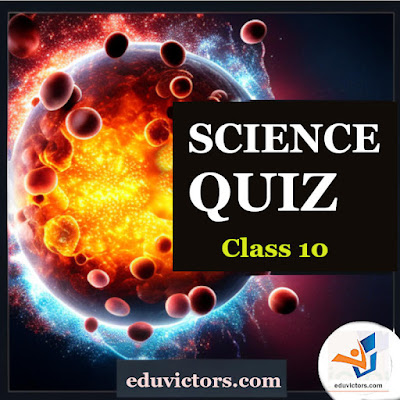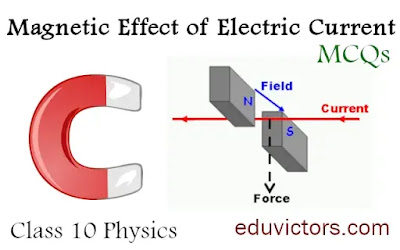Class 10 Physics - SI Units of Physical Quantities
The SI Unit of
1. Commercial Unit of Electrical Energy
2. Resistance
3. Electrical resistivity
4. Current
Blog provides NCERT solutions, CBSE, NTSE, Olympiad study material, model test papers, important Questions and Answers asked in CBSE examinations. References to Educational Sites and resources.
The SI Unit of
1. Commercial Unit of Electrical Energy
2. Resistance
3. Electrical resistivity
4. Current

Class 10 is a crucial turning point in a student's academic career, and passing the CBSE exams depends on possessing the correct reference books.
When choosing science books for standard 10 students, it is important to consider a few key factors, including the level of difficulty, relevance to the curriculum, and engagement level. Here are some tips to help you choose the best science books for standard 10 students:

Q1. In which of the following, heat energy will be evolved?
(a) Electrolysis of water
(b) Dissolution of NH4Cl in water
(c) Burning of L.P.G.
(d) Decomposition of AgBr in the presence of sunlight

Q1: The laws of reflection hold true for:
(a) plane mirrors only
(b) concave mirrors only
(c) convex mirrors only
(d) all reflecting surfaces
Q2: Focal length of a plane mirror is
(a) zero
(b) infinite
(c) 25 cm
(d) -25 cm

Q1: By what other name is the unit joule/coulomb called ?
Answer: Volt
Q2: Which of the following statements correctly defines a volt ?
(a) a volt is a joule per ampere.
(b) a volt is a joule per coulomb.
Answer: (b) a volt is a joule per coulomb.
Q3: (a) What do the letters p.d. stand for ?
(b) Which device is used to measure p.d. ?
Answer:
(a) p.d. stands for potential difference.
(b) Voltmeter is used to measure p.d.

1. Why does not a wall immediately acquire a white colour when a coating of slaked lime is applied on it ?
2. Define displacement reaction with one example.
3. Identify the most reactive and least reactive metal : Al, K, Ca, Au.
4. Which of the following is a combination reaction and which is a displacement reaction ?
(a) Cl₂ + 2KI ——–> 2KCl + I₂
(b) 2K + Cl₂ ——–> 2KCl.
5. What is the difference between the following two reactions ?
(a) Mg + 2HCl ——–> MgCl2 + H2
(b) NaOH + HCl ——–> NaCl + H2O.
6. Identify the compound which is oxidised in the following reaction
H₂S + Br₂ ———–> 2HBr + S.
7. What happens chemically when quick lime is added to water ?

Open Circuit
An open circuit implies that the two points are externally disconnected, which is equivalent to a resistance R = ∞ . This means that theoretically no current(I = 0) can flow between the two terminals, regardless of any value of potential difference ( V= 0 to ∞).

CBSE Class 10 Physics
Buy Oswal Science Question Bank (For 2021 Examination)
Directions: Read the question carefully and choose the right option from the choices given.












| No. | Discovery | Scientist | Year |
|---|---|---|---|
| 1. | Proton | Rutherford | 1919 |
| 2. | Neutron | James Chadwick | 1932 |
| 3. | Atom | John Dalton | 1808 |
| 4. | Atomic Structure | Neil Bohr & Rutherford | 1913 |
| 5. | Radioactivity | Henry Becquerel | 1896 |
| 6. | Radium | Madam Curie | 1898 |
| 7. | Raman Effect | CV. Raman | 1928 |
| 8. | X-Rays | Roentgen | 1895 |
| 9. | Photoelectric effect | Albert Einstein | 1905 |
| 10. | Periodic table | Mendeleev | 1888 |
| 11. | Nuclear Reactor | Anrico Fermi | 1942 |
| 12. | Wireless Telegram | Marconi | 1901 |
| 13. | Dynamite | Alfred Nobel | 1867 |

Please turn off the ad blocker. This is only way that we can earn some penny. Please support us by trun off the ad blocker.
Thank you!!